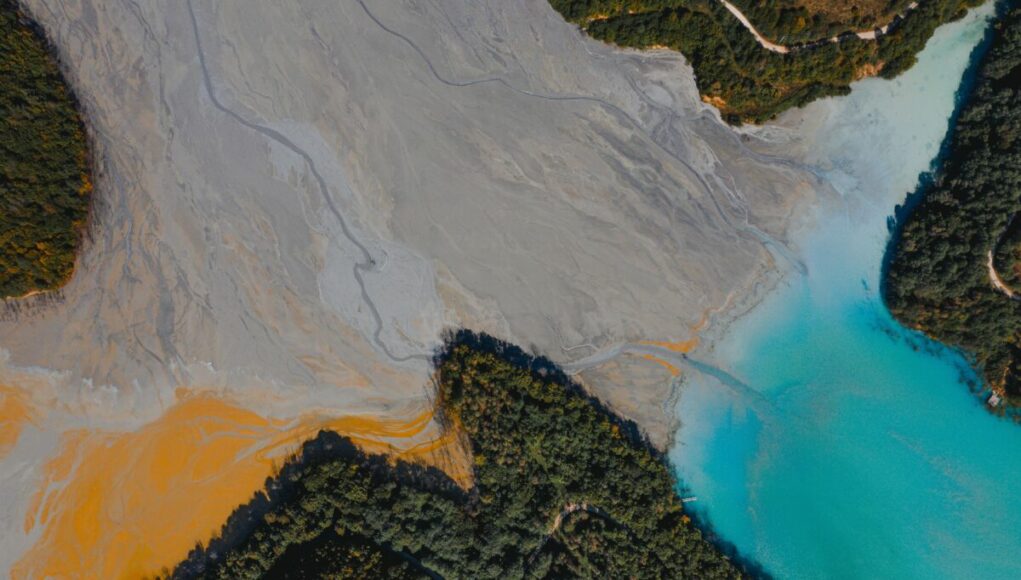INSIGHT by CDP
〉Of 136 fashion & textile companies requested by investors and customers to disclose water impacts through CDP, less than half (62) provided data in 2019
〉Only seven (or 11%) of these 62 companies (including Gap Inc, H&M and Kering) are showing awareness of water pollution across their whole value chain.
〉Just one of the 62 companies (H&M) mentions microplastics or microfibers, despite the production, use and disposal of textiles being a major source of microplastics.
〉Better water management is good business: companies report over US$180 million in business opportunities related to water pollution reduction.
〉Less than a quarter (23%) of analyzed companies are setting targets or goals to reduce water pollution while a mere 6% monitor and report on progress.
| The global fashion & textiles industry is largely blind to the risks of water pollution and is failing to tap into water-related business opportunities, according to a new report published today by CDP, a global environmental non-profit.
CDP research shows the sector’s level of awareness and transparency is low, despite companies increasingly facing material risks from water pollution, including regulatory penalties, losing the social license to operate and damaged brand image. Less than half of the companies requested to provide data did so, and of those that reported, only one in 10 show awareness that water pollution is a risk across every stage of the apparel value chain.
Yet the fashion & textiles industry is known to be a major polluter of water. This spans all stages of the value chain, from the agricultural runoff from cottonfields causing algal blooms that choke rivers, to the dying process releasing a cocktail of toxic chemicals and the washing of clothes releasing microplastics.
The report, Interwoven Risks, Untapped Opportunities, analyzes data from 62 companies (brands, manufacturers and retailers) involved in the fashion/apparel, footwear & home textiles industry, including Adidas AG, Burberry, Gap Inc, H&M, Inditex and Kering Group. These 62 companies disclosed through CDP’s water security questionnaire in 2019, at the request of investors and corporate customers.
CDP’s analysis found the majority of substantive pollution risks reported by these companies were identified in the manufacturing stages of their value chain. Very few substantive risks were reported in other parts of the value chain known to have a high pollution potential.
In fact, only around one in 10 (11%) even acknowledge that product use and disposal can also contribute to water pollution, and not a single company considers pollution at this stage of the value chain to be a substantive financial or strategic risk.
This 11% that shows awareness of water pollution across all stages of the value chain is represented by just seven risk-aware companies: high-street fashion giants Gap Inc, H&M and Inditex (the biggest fashion group in the world and owner of Zara); along with luxury fashion houses Burberry and Kering Group (owner of Gucci and Saint Laurent); American multinational clothing firm Hanesbrands Inc; and South Africa-based multinational retailer Woolworths Holdings Ltd.
| Agata Smeets, Director of Supply Chain Sustainability at Gap Inc, commented: “Water is a business-critical issue for the apparel industry, and we recognize its importance across our value chain. We must focus not only on reducing water consumption in our manufacturing operations, which we started tackling with our water reduction goal, but also in raw material cultivation and customer product water use. We are also committed to improving water access and quality, in the regions we operate. Water is a context based, localized issue and the industry will need to continue to work with stakeholders in key water basins across our value chain, including the communities that are impacted by our water usage”.
| Marie-Claire Daveu, Chief Sustainability Officer & Head of International Institutional Affairs at Kering Group, added: “Water pollution is one of the six environmental impacts covered by Kering’s Environmental Profit & Loss account for nearly 10 years. Because of the large amounts of water used by tanneries, special wastewater treatment measures are required: we have been working with our suppliers to improve processes, and implement programs to protect the environment all along our supply chain.”
This report follows an open letter, released during World Water Week1, signed by global brands such as Burberry, H&M and Primark along with non-profits including CDP and WWF, which called on the fashion industry to embrace sustainability in the recovery from COVID-19 and to ‘build back better’ with more focus on resilience and sustainability.
| Cate Lamb, Director of Water Security at CDP, said: “The pressure is mounting for fast fashion to clean up its act when it comes to water pollution. Investors, regulators, customers, and consumers alike are all calling for change. The industry was hit hard by the COVID-19 crisis this year, and the temptation will be there to prioritize short term gains. But the road to a resilient recovery lies in embracing sustainability and circular economy practices. This is the direction of travel and the companies leading the way will be best prepared for the future.”
Despite the data being reported in 2019, when public concern about plastic waste was at an all-time high, H&M was the only reporting company to mention microplastics or microfibers in their disclosure. This is despite the production, use and disposal of textiles all contributing to the release of micro or nanofibers. The washing of synthetic textiles is one of the primary sources of microplastics in the aquatic environment, accounting for 35% of all microplastics released globally2. These substances have been shown to damage aquatic ecosystems and even accumulate in human body tissue.
Despite a general lack of awareness, there are opportunities to be seized through innovative water management. Fashion & textile companies reported over US $180 million per year in business opportunities related to addressing water pollution, for example through investing in sustainable materials that contribute to improved brand image. CDP’s analysis suggests that, in general, such opportunities are significantly underestimated and under-reported.
A survey conducted by McKinsey identified that 66% of U.S. consumers now consider sustainability when making a luxury purchase, with younger generations increasingly stating that they are willing to pay more for products which have a proven minimized environmental impact (Gen X – 17%, Millennial – 26%, Gen Z – 31%)5.
While only 10% of analyzed companies identified opportunities from use of recycled materials, the European Union and the Ellen MacArthur Foundation estimate the circular economy has potential to boost the EU economy by 0.5% of GDP by 2030 and create 700,000 jobs, including in textiles6. The EU Strategy for Textiles, to be released in 2021, is anticipated to drive further action and could spark circular economy policy developments in other regions.
Water pollution has been called an ‘invisible crisis’ by the World Bank3, and through its excessive water usage, the apparel and textile industry is a major contributor. In 2015 alone, the sector used 79 billion cubic metres of water. Meanwhile the UN has estimated that globally, 80-90% of wastewater is returned to the environment untreated4.
CDP runs the world’s leading environmental disclosure system. In 2019, 8,400 companies in total disclosed through CDP’s disclosure platform on climate change, forests and/or water security. In 2020, 515 investors with US$106 trillion in assets and 150+ major purchasers with US$4 trillion in buying power called on companies to disclose.
| about
CDP is a global non-profit that drives companies and governments to reduce their greenhouse gas emissions, safeguard water resources and protect forests. Voted number one climate research provider by investors and working with institutional investors with assets of US$106 trillion, we leverage investor and buyer power to motivate companies to disclose and manage their environmental impacts. Over 8,400 companies with over 50% of global market capitalization disclosed environmental data through CDP in 2019. This is in addition to the over 920 cities, states and regions who disclosed, making CDP’s platform one of the richest sources of information globally on how companies and governments are driving environmental change. CDP is a founding member of the We Mean Business Coalition.
| All opinions expressed are those of the author. investESG.eu is an independent and neutral platform dedicated to generating debate around ESG investing topics.









